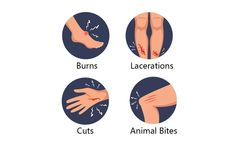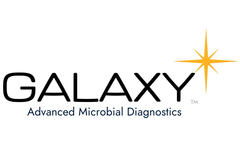Refine by
Antibiotic Resistant Articles & Analysis: Older
54 articles found
Researchers often select for stable cell lines by integrating antibiotic resistance genes alongside target genes, enabling them to isolate and cultivate only those cells that incorporate the desired genetic material. ...
These include ethical concerns around the long-term effects of genetically manipulating organisms, potential off-target effects, and the risk of creating antibiotic-resistant strains of bacteria. Although current regulations and guidelines address some of these issues, more comprehensive and globally harmonized legislation is needed to ensure that genome ...
Precision-Cut Lung Slices (PCLS) have emerged as a innovative ex vivo model that allows researchers to explore deep into lung physiology, disease mechanisms, and pharmacological responses. By offering a unique combination of biological complexity and controlled experimental conditions, PCLS serve as a critical bridge between the limitations of traditional in vitro cell cultures and the ...
Meanwhile, dry lab bioinformatics analysis encompasses tasks like data quality control, the elimination of human sequences, comparison of microbial species sequences, and analysis of drug resistance or virulence genes. Unveiling the Process: Key Stages Sample Collection: Precision in collecting samples from the primary infection site augments detection rates substantially. ...
The antimicrobial peptide mechanism is being studied in depth for its ability to serve as an alternative to conventional antibiotics in an era of increasing antibiotic resistance. Antimicrobial peptides also demonstrate anti-inflammatory, anti-cancer, and wound healing properties, broadening their portfolio of potential applications. ...
These include ethical concerns around the long-term effects of genetically manipulating organisms, potential off-target effects, and the risk of creating antibiotic-resistant strains of bacteria. Although current regulations and guidelines address some of these issues, more comprehensive and globally harmonized legislation is needed to ensure that genome ...
Antibiotic resistance is one of the main challenges in public health in the 21st century. It is mostly due to prolonged and/or inadequate use of antibiotics. These, along with antibiotic resistant bacteria, get into municipal and hospital wastewaters, and may be spread into water sources by inefficient ...
Incorporating into textiles: Fabrics treated with antimicrobial powder can resist odors and the spread of germs, making them ideal for clothing, bedding, and medical textiles. ...
ByMatexcel
Here are some important "don'ts" to facilitate the correct wound healing. Don't Overuse Topical Antibiotics: While topical antibiotics can help prevent infection in some cases, they should not be overused. Excessive use can lead to antibiotic resistance, rendering them ineffective when needed. Don't Overuse Iodine or Hydrogen ...
The first clinical application of polymyxins was in 1959 with colistin (also known as polymyxin E). Colistin is an antibiotic used to treat multidrug-resistant (MDR) Gram-negative bacterial infections, including pneumonia. ...
Their work is important amid growing concerns about rising antibiotic resistance. The scientists, led by Martin Caffrey, Emeritus Fellow of Trinity's Faculty of Medicine and School of Biochemistry and Immunology, used next-generation x-ray crystallography and single-particle cryo-electron microscopy to "see what's going on under the bacterial cap.", and ...
Drugs originated from marine microorganisms, such as cytarabine (anti-cancer), cephalosporins (anti-microbial), and vidarabine (anti-virus), have been established on the pharmaceutical market. Antibiotics: Novel antibiotics and enzymes are among the early discoveries from metagenomics. The discovery of streptomycin, turbomycin, and other ...
Drugs originating from marine microorganisms, such as cytarabine (anti-cancer), cephalosporins (anti-microbial), and vidarabine (anti-virus), have been established on the pharmaceutical market. Antibiotics: Novel antibiotics and enzymes are among the early discoveries from metagenomics. The discovery of streptomycin, turbomycin, and other ...
Abera’s vaccine delivery platform works as a plug-and-play system where known or novel antigens can be engineered onto our delivery platform to create effective, multivalent vaccines that are cost-effective and fast to produce. We actively work together with academia and industry to enable the use of our vaccine delivery platform in design and development of new vaccines. Many of these ...
According to statistics published by World Health Organization (WHO), 8.8 million active cases are diagnosed each year, and almost 2 million die. Antibiotic resistance has resulted in multidrug-resistant (MDR TB) and extra-multi drug-resistant (XDR TB) forms of the disease, both of which are highly contagious and very expensive ...
Disease-causing bacteria can be killed using antibiotics. One of the ways to treat a bacterial infection is through antibiotics. ...
Currently, the activity of Cas9 nuclease can be regulated by light, temperature, and antibiotics, but these regulation methods have different defects. For example, the use of antibiotic-regulated Cas9 nucleases often fails to completely inhibit Cas9 activity, and the use of antibiotics may affect the animal's microbiome, causing other side ...
What is a Hospital Acquired Infection? A Hospital-Acquired Infection (HAI) (also know as a Healthcare-Associated Infection (HCAI) or nosocomial infection) is defined by WHO as ‘an infection acquired in hospital by a patient who was admitted for a reason other than that infection1‘. This includes infections acquired in the hospital but appearing after discharge, and also occupational ...
Study Results In an oral abstract of the Steripath Gen2 Initial Specimen Diversion Device® (ISDD) study results presented to PACCARB 2021, the Presidential Advisory Council on Combating Antibiotic-Resistant Bacterial titled “Getting to Zero: Eliminating Blood Culture Contamination with the ISDD,” Tompkins reported zero blood culture contamination ...
The figure below summarizes the application of Capture-Seq in pathogen detection, identification, characterization, and determination of virulence/resistance determinants (source: Gaudin and Desnues, 2018). For pathogen detection, this technology is able to detect even low-copy number pathogens and even detect different pathogens at the same time. ...

















